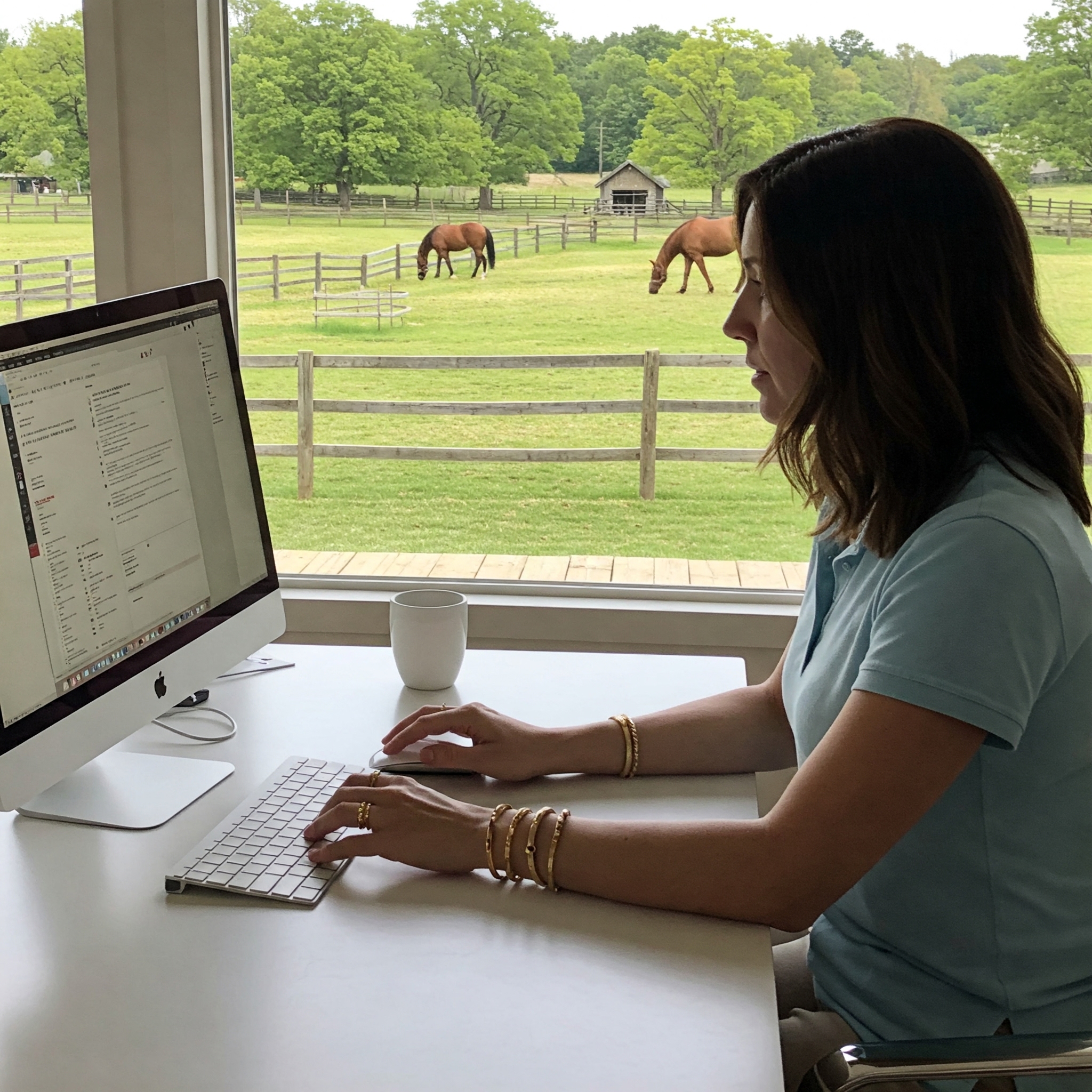
19 May From Pasture to Profit: How Horse Farms Can Launch Retail Businesses Without Lots of Capital
You don’t need millions in the bank, a luxury brand shoot, or a slick investor deck to start a profitable business. Whether you’re dreaming of a barn-branded towel line, equestrian-themed home goods, or a collection of custom apparel, there’s never been a better time for U.S.-based horse farms to explore ecommerce and product-based businesses.
In fact, many of today’s successful product businesses started with nothing but a niche, a low-cost or free website builder, and a few strategic partnerships.
Here’s how horse farms—especially small, independent ones—can make it happen.
1. Start With What You Know and What People Already Want
You’re already surrounded by a community of people who love horses, barns, and the lifestyle that comes with it. Tap into that.
Examples of easy-to-launch products:
- Equestrian-themed kitchen or bath linens
- Barn-friendly athleisure or graphic tees
- Printable checklists or digital ride journals
- Horse-themed stationery or home decor
- Riding helmets and riding leggings for your barn students
Don’t overthink this. Start with 1–2 products that solve a problem or delight your current audience.
2. Partner with Established Businesses (Without Paying Upfront)
Instead of building your own factory or carrying inventory, consider:
- Print-on-demand platforms like Printify or Gelato for apparel and textiles
- White-label options from U.S. manufacturers who allow small batch orders
- Local textile shops who might offer short-run production if you bring them consistent orders
- Cross-promotion with other farms who might want to co-brand a product with you
Tip: Many manufacturers will work with you on a dropship basis or with no minimums—especially if you approach them as a long-term collaborator.
3. Skip the Fancy Photoshoots—for Now
You don’t need a $3,000 brand shoot to sell products. Use natural light, your smartphone camera, and your existing barn as the backdrop.
Here’s what you can do instead:
- Snap photos during golden hour in the pasture or arena
- Use riders and staff as models—they’re more relatable anyway
- Use Canva, ChatGPT, and similar tools to create clean, branded visuals
Focus on conveying use, benefits, and vibe. You can polish things up later once revenue is rolling in.
4. Use Free or Low-Cost Tools to Launch
You don’t need to hire a web developer or pay $300/month for an ecommerce setup. These tools are more than enough for your first 6–12 months:
Platforms to consider:
- Shopify (starter plan is $5/month; full plan is $39/month)
- Square Online (free for basic stores)
- Stan Store or Payhip (ideal for digital products and course bundles)
- Ko-fi (perfect for selling PDFs, guides, or small batch merch)
And remember—your Facebook and Instagram accounts can double as your storefront until you’re ready for something more robust.
5. Start Selling Services or Digital Products First
Not ready to go all-in on manufacturing? Try services or digital downloads first.
Ideas:
- Offer a downloadable horse care guide for new owners
- Sell training videos
- Offer printable logs or stable management templates
- Unique, breed- or discipline-specific coloring pages for kids
Digital products don’t require inventory, and they help establish your expertise and reach.
6. Focus on Sales, Not Perfection
Many new business owners spend weeks picking the perfect logo, name, and color palette. Don’t get stuck there. Your early energy should go into:
- Building a mailing list
- Creating social content that explains the product
- Talking directly to your current barn families, show circuit contacts, and local networks
- Taking pre-orders or testing demand before you invest heavily
A simple product that solves a real problem will always outperform a perfectly-branded one no one knows about.
7. Lean on Your Horse Community
Your network is already bigger than you think.
Ways to spread the word:
- Ask current students and parents to share your shop line
- Trade promos with complementary small businesses (e.g., local farriers, saddle fitters, show photographers)
- Bring your products to horse shows, barn open houses, and local tack swaps
Use real voices and real testimonials. The horse world runs on word of mouth—lean into it.
8. Plan for Simple Fulfillment (Even if You’re Busy)
You don’t need to open a shipping warehouse to get started. Options:
- Use print-on-demand or dropshipping so items ship without your involvement (hint: many small USA-based manufacturers will be happy to dropship for you, just contact ones you like and ask if they are open to this)
- Batch-ship orders 2x to 3x per week, using Pirate Ship for low-cost postage
- Offer local pickup or delivery if you’re selling to your barn families (be sure to add on a fee for this, so that it’s worth your while)
Keep things relaxed. Growth can come after you get some experience and build necessary systems.
9. Track Your Metrics—Even If They’re Small
Start measuring from day one. Focus on:
- Which posts lead to clicks or sales
- Which products have the highest margin
- Repeat customers vs. first-timers
- What’s actually working (according to the numbers) vs. what “feels” like it is
This will help you decide what to double down on—and what to stop.
10. Remember: This is a Long Game
A successful ecommerce side business doesn’t usually explode overnight. But if you give it 6–12 months, stay consistent, and listen to your audience, you can create something that brings in real revenue and complements your horse business beautifully.
And you don’t need outside funding or massive risk to do it. Just:
- A niche
- A starting product
- A loyal community
- And the courage to begin
Visit KristinaDerby.com/blog for more real-world examples, case studies, and marketing ideas for horse businesses of all sizes.
Join our Facebook Group (Horse Business Marketing & Sales Strategies): https://www.facebook.com/groups/horsemarketing
